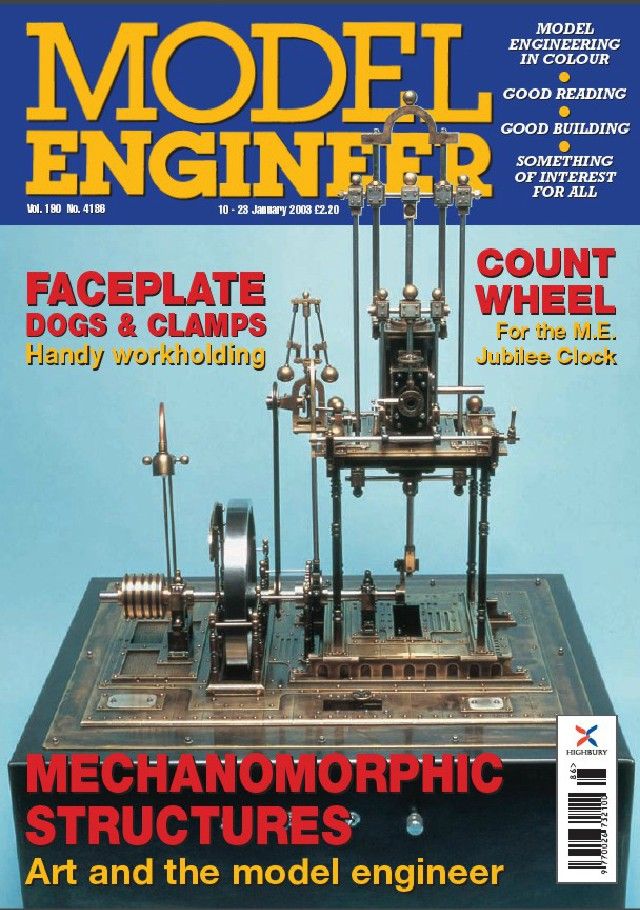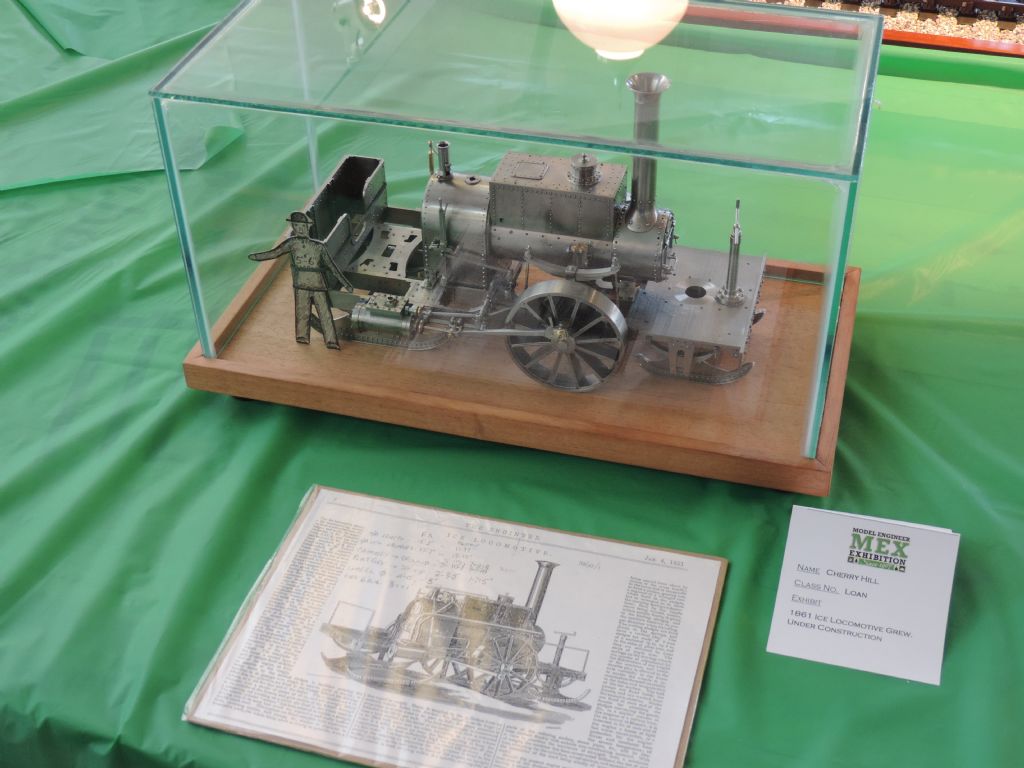(now obtained access to my book)
The figure originally appeared in “The exhibited Machinery of 1862” (a similar exhibition to the Great 1851 at the same place) – the text reads:
Mr. Nathaniel Grew, London, exhibited a
model of a locomotive engine for running on ice,
reported to have been successfully at work in
Russia, during last winter, on the river Neva,
conveying passengers and goods between St.
Petersburg and Cronstadt. The engine is
carried by a sledge under the fore part, and a
pair of driving-wheels 5 feet diameter at the
back of the fire-box, worked with an intermediate shaft, and a pair of outside cylinders, 10
inches diameter by 22 inches stroke. The cir?cumferences of the wheels are studded with steel
spikes, to obtain the necessary adhesion for
traction. The engine is steered by turning the
sledge, in front, by means of a screw and worm?
wheel, and a pinion gearing into a circular rack
fixed to the sledge. The proportion of the
weight of the engine carried by the sledge is
supported on four springs, with an allowance for
lateral traverse. The engine weighs, in working
trim, about 12 tons, of which, no doubt, more
than half is carried by the sledge, and less than
half by the wheels, on account of their extreme
position, without any power of adjustment.
The engine is reported to have attained a speed
of 18 miles per hour, with a gross load of
20 tons. There are, no doubt, considerable
practical difficulties to overcome ; for example,
the necessity for providing adhesion artificially,
and the resistance of snow to the advance of
the sledge. Mr. Grew’s engine is a very creditable application of the locomotive, in a novel
direction (fig. 16, page 18).
the maker’s plate is Neilson & Co Glasgow 786
 Neil Wyatt.
Neil Wyatt.






